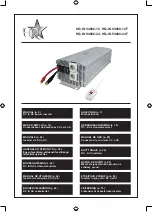
6.6.4
Real time clock (RTC)
The real-time clock is the basis for time-dependent process controls, e.g.:
● To reduce the temperature of a heating control during the night
● To increase the pressure of a water supply at certain times during the day
Accept the real-time clock in the alarm and fault buffer
Using the real-time clock, you can track the sequence of alarms and faults over time. When an
appropriate message occurs, the converter converts the real-time clock into the UTC time
format (Universal Time Coordinated):
Date, time ⇒ 01.01.1970, 0:00 + d (days) + m (milliseconds)
The converter takes the number "d" of the days and the number "m" of the milliseconds in the
alarm and fault times of the alarm and/or fault buffer.
Warnings, faults and system messages (Page 959)
Converting UTC to RTC
An RTC can again be calculated in the UTC format from the saved fault or alarm time. In the
Internet, you will find programs to convert from UTC to RTC, e.g.
UTC to RTC (
http://unixtime-converter.com/
)
Example:
Saved as alarm time in the alarm buffer:
r2123[0] = 2345 [ms]
r2145[0] = 14580 [days]
Number of seconds = 2345 / 1000 + 14580 × 86400 = 1259712002
Converting this number of seconds to RTC provides the date: 02.12.2009, 01:00:02.
The times specified for alarms and faults always refer to standard time.
Function and settings
The real-time clock starts as soon as the Control Unit power supply is switched on for the first
time. The real-time clock comprises the time in a 24 hour format and the date in the "day, month,
year" format.
After a Control Unit power supply interruption, the real-time clock continues to run for approx.
five days.
If you wish to use the real-time clock, you must set the time and date once when commissioning.
If you restore the converter factory setting, the converter only resets parameters p8402 and
p8405 of the real-time clock. P8400 and p8401 are not reset.
3,'
Advanced commissioning
6.6 Technology controller
SINAMICS G120X converter
Operating Instructions, 06/2019, FW V1.01, A5E44751209B AC
373
















































